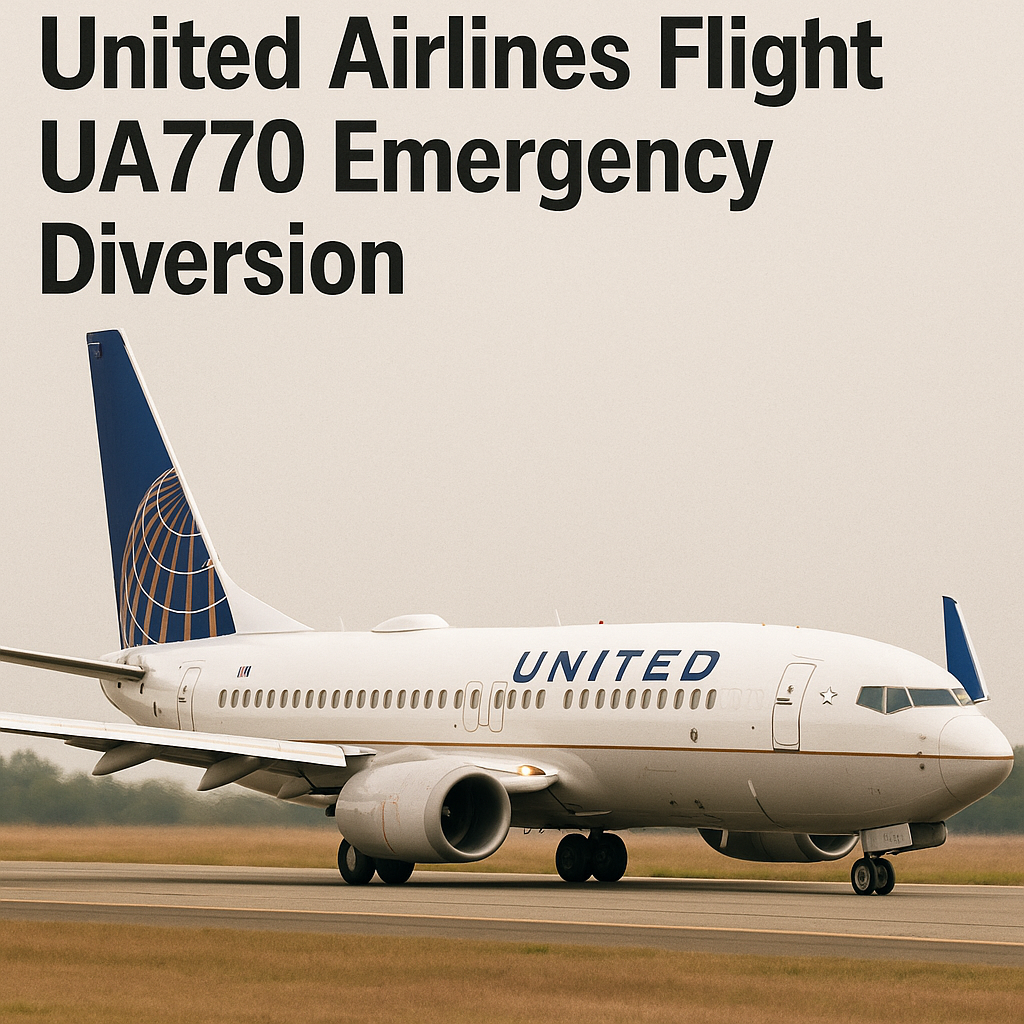What began as a routine journey aboard United Airlines Flight UA770 turned into a gripping mid-air emergency that captured national attention. On that fateful day, passengers were jolted from calmness into chaos when the aircraft was forced to make an emergency diversion due to a critical onboard issue. While no fatalities occurred, the incident has sparked renewed discussions about airline safety, crew preparedness, and emergency response protocols.
In this article, we dive deep into what really happened on UA770, explore firsthand accounts, and examine the broader implications for airline passengers and industry regulations.
The Flight Plan: From Routine to Crisis
Original Route and Schedule
United Airlines Flight UA770 was scheduled to fly from Los Angeles International Airport (LAX) to Chicago O’Hare International Airport (ORD)—a well-traveled route flown multiple times daily. The Boeing 737 aircraft took off at approximately 10:15 a.m. local time, with clear weather and no anticipated turbulence.
Unexpected Trouble Mid-Flight
Roughly 90 minutes into the journey, the aircraft began exhibiting signs of a mechanical failure. According to onboard sources and FAA reports, pilots received abnormal system alerts, prompting immediate consultation with United’s technical team.
Passengers later recalled the moment the pilot’s calm voice came over the intercom: “Ladies and gentlemen, we’re experiencing a technical issue and, as a precaution, will be diverting to Denver.”
What Caused the Emergency Diversion?
Pressurization System Malfunction
The primary issue, as later confirmed by United Airlines and the FAA, was linked to a malfunction in the aircraft’s pressurization system. This is a critical component that maintains cabin air pressure at safe levels during high-altitude flights.
When sensors detected irregular pressure readings, protocol demanded the flight descend rapidly and reroute. The pilots followed standard emergency procedures, initiating a controlled descent from 36,000 feet to 10,000 feet to stabilize cabin conditions.
Safety vs. Schedule: Why Diversion Was Necessary
Although the aircraft was technically capable of reaching its original destination, airline policy—and common sense—prioritizes passenger safety above all else. Denver International Airport (DEN) was chosen as the nearest major airport with appropriate facilities to inspect and repair the fault.
Inside the Cabin: Passengers React
Moments of Panic and Calm
For many of the 138 passengers on board, the emergency descent was alarming. Oxygen masks were not deployed, but the sudden drop in altitude and change in cabin pressure caused discomfort and anxiety.
One passenger, Julie Harrington, recounted: “My ears popped, and we felt the plane drop suddenly. The crew stayed calm, but everyone was looking around, worried.”
Crew Response and Professionalism
Flight attendants reportedly moved swiftly through the cabin, checking on passengers and ensuring everyone remained seated. Their calm demeanor and clear communication were widely praised. “They were amazing,” said another passenger. “It was like they’d rehearsed this a hundred times.”
Landing in Denver: Ground Response
Emergency Services on Standby
As UA770 approached Denver International Airport, emergency crews were positioned on the tarmac. While no injuries were reported, medical staff was available for anyone experiencing discomfort.
The aircraft touched down safely at approximately 12:07 p.m. local time, and all passengers were deboarded smoothly.
Passenger Accommodation
United Airlines quickly arranged for connecting flights, hotel accommodations (for overnight delays), and meal vouchers. Several passengers noted how efficient and empathetic the ground staff was during the disruption.
United Airlines’ Official Statement and Follow-Up
Public Relations and Transparency
Within hours of the incident, United Airlines issued a public statement confirming the emergency diversion and reassuring passengers that the crew acted in full accordance with safety protocols.
The airline emphasized:
-
No injuries occurred.
-
The diversion was a precautionary measure.
-
An investigation was underway to determine the root cause.
Aircraft Inspection Results
Maintenance crews thoroughly inspected the aircraft. Reports suggest that a faulty valve within the pressurization system was the culprit. The plane was temporarily grounded, repaired, and re-certified before returning to service.
Lessons Learned and Industry Takeaways
How Prepared Are We for Mid-Air Emergencies?
UA770’s diversion reminds us that emergency preparedness isn’t optional—it’s essential. Pilots, crew, and air traffic control all played crucial roles in ensuring a safe landing, reaffirming why training and drills are constantly emphasized in the aviation industry.
Passenger Tips for Future Flights
-
Stay Calm: Panic only increases risk.
-
Follow Crew Instructions: They’re trained for emergencies.
-
Know the Basics: Familiarize yourself with safety cards and exits.
FAQs: United Airlines Flight UA770 Emergency Diversion
Q1: Was anyone injured during the UA770 diversion?
No, all passengers and crew landed safely without physical injury. Some reported temporary discomfort due to altitude change, but no medical emergencies occurred.
Q2: Why was Denver chosen as the diversion airport?
Denver was the closest large airport equipped to handle emergency maintenance and offer quick assistance to passengers.
Q3: Did the oxygen masks deploy during the incident?
No, the cabin pressure remained within acceptable levels, so masks were not needed. However, pilots executed a descent to ensure safety.
Q4: Has this happened before on United flights?
While rare, pressurization issues are not unheard of. Airlines like United have strict procedures in place, and similar diversions have occurred in the past with other carriers too.
Q5: Was the plane used again after the incident?
Yes, after a full inspection and repair of the faulty valve, the aircraft was returned to service with full FAA compliance.
Conclusion
The emergency diversion of United Airlines Flight UA770 was a textbook example of how a potential crisis was turned into a controlled, safe situation through training, quick thinking, and professional execution. While such incidents can be frightening, they also highlight the resilience and readiness of modern aviation systems.
Passengers may have arrived late, but they arrived alive and well—a reminder that safety always comes before schedule.

